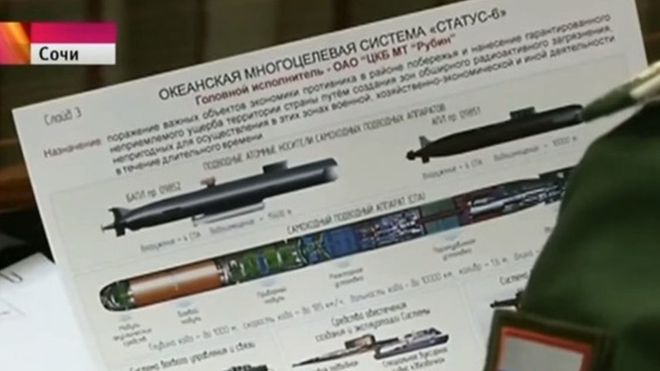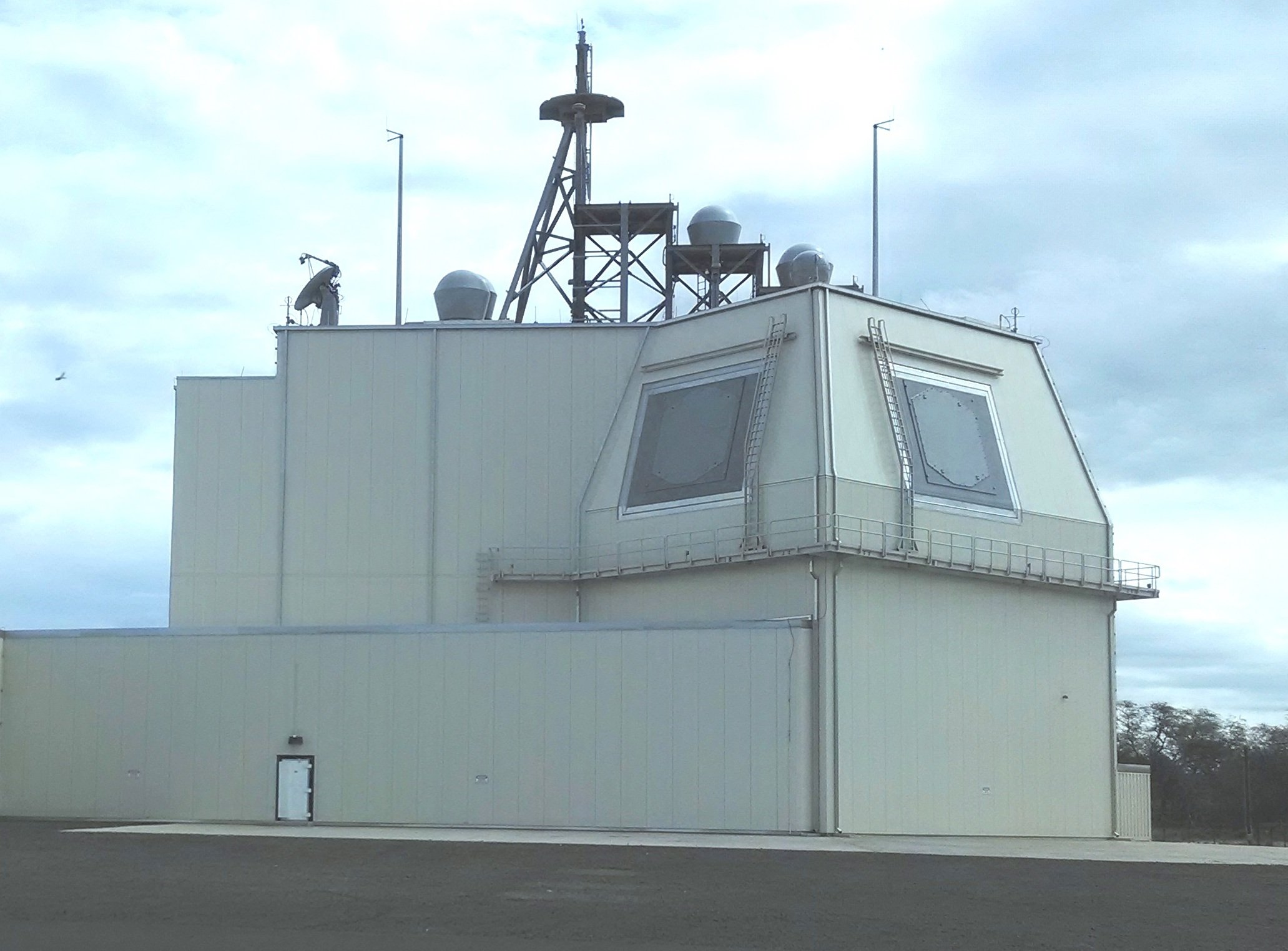
A proposed Russian submarine launched doomsday weapon — the existence of which was almost certainly leaked by the Kremlin — gives clues to the Russian mindset for the development of new strategic weapons in the face of the West’s increasing ballistic missile defense capability and Russia’s shrinking national assets, a naval analyst told USNI News on Thursday.
The Status-6 weapon was revealed on Wednesday during a Russian broadcast of a meeting between Russian President Vladimir Putin and military leaders in Sochi and a screengrab of the weapon was widely circulated following the broadcast.
The weapon is allegedly a “robotic mini-submarine” capable of speeds 100 knots with a range of 6,200 miles, according to state controlled press and designed to “destroy important economic installations of the enemy in coastal areas and cause guaranteed devastating damage to the country’s territory by creating wide areas of radioactive contamination, rendering them unusable for military, economic or other activity for a long time,” according to a translation of the document by the BBC.
Immediately before the reveal of the weapon Putin was discussing how the emerging U.S. ballistic missile defense (BMD) network in Europe was “an attempt to undermine the existing parity in strategic nuclear weapons and essentially to upset the whole system of global and regional stability,” according to the BBC.
Russia has been highly critical of the creation of two Aegis Ashore installations — one in Romania and one in Poland — that are land-based versions of the BMD capability found on some U.S. Arleigh Burke guided missile destroyers (DDG-51). In addition to Aegis Ashore, the U.S. has recently completed the basing of a quartet of BMD capable Burkes in Rota, Spain that are part of the Obama administrations European Phased Adaptive Approach (EPAA) to BMD.

Eric Wertheim — naval analyst and author of U.S. Naval Institute’s Combat Fleets of the World — told USNI News on Thursday the reveal of Status-6 was telling as to the current Russian arms development mindset.
“It shows that they’re thinking about non-conventional weapons in line with Cold War era thinking,” he said.
“The West is developing weapons — like the Small Diameter Bomb — that create a smaller more targeted effect. This type of weapon is exactly the opposite.”
The differences in the strengths and weaknesses of the Russian defense industrial base are much more extreme than the West’s.
For example, the Russian’s are second only to the U.S. in the development of nuclear submarines and their latest attack submarine design has earned praise from U.S. Navy officials.
However, the Russians lag behind the West in the manufacture of maritime gas turbines and Russian Navy’s surface ship construction is suffering as a result.

A weapon like Status-6 would play into Russia’s current military strengths and provide the Kremlin with a strategic deterrent that would bypass the growing American acumen at BMD, he said.
The weapon also comes with the benefit of being relatively inexpensive. While Putin has pledged to boost military spending, the last year has seen a massive drop in the value of Russian currency and decline in revenues from oil.
“They want to develop weapons that are cheap but also effective,” Wertheim said.
The reveal of the weapon also allows the Russians to display a degree of self confidence and capability as Russia begins to rebuild its high-end military capability after decades of neglect.
“They need a saber to rattle,” Wertheim said.
“Whether or not this turns out to be real or a figment of their imagination remains to be seen but it shows where they’re going with their weapons development and that they’re thinking outside the box.”





